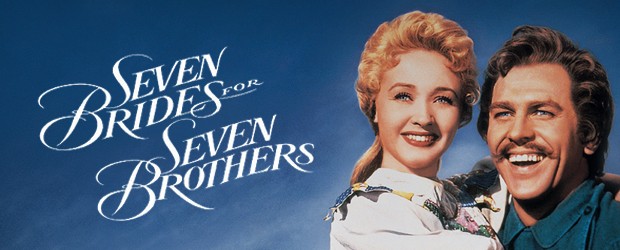‘Did Richard III Marry His Sister?’
Lurid headlines blared off a rag on sale during Richard’s re-interment week in March 2015. A certain anti-Richard professor was, once again, insisting that because Isabel Neville was sister to Anne Neville and married to Richard’s brother George, that made Richard Isabel’s ‘brother’ and therefore his union with Anne ‘incestuous’ under the laws of the time.
This claim appears to have little foundation. There were several other notable marriages where two royal brothers married two sisters. In 1236, King Henry III of England married the young and beautiful Eleanor of Provence, daughter of Raymond Berenger and his clever, refined wife Beatrice. A few years later, in 1243, Henry’s brother, Richard of Cornwall, married Eleanor’s equally attractive younger sister, Sanchia.
No accounts from the time suggest anything was considered irregular about either marriage due to two brothers marrying two sisters. There was some worry about the legality of Henry’s marriage, but this was because he had previously made a proxy marriage to Joan of Ponthieu. The marriage was not consummated, as Henry was eager to state (he and Joan probably never met) and hence was swiftly annulled.
Interestingly, there was another pairing of two brothers and sisters involving the Provencal daughters of Raymond Berenger, only these marriages took place in France rather than England. King Louis IX married the eldest of the four girls, the clever Margaret or Marguerite, and some time later, when she was of age, Louis’s brother Charles married the youngest one, Beatrice.
Another case of brothers marrying sisters in English royalty concerns John of Gaunt and his youngest brother Edmund of Langley. Gaunt took Constance of Castile as his second wife, while Edmund of Langley wed Constance’s sister Isabella…and from this latter union was born Richard of Conisbrough, the father of Richard Plantagenet, Duke of York, and grandfather to Richard III and his siblings.
Isabella and Edmund were said to be an ill-matched pair…but there were no suggestions at the time that their marriage was considered incestuous because two brothers had married two sisters.
Indeed, such unions did not seem all that uncommon or frowned upon at all….


The certain anti-Richard professor is Michael Hicks and is embarassing for the Academia, he should be given the cut direct. After making himself a laughing stock denying the remains found in Leicester were Richard’s, he has to find something else to hit the headlines and sell like the worst scandalistic rag, no matter how hilarious in the eyes of anyone who really knows the story of the time. What next? Maybe Richard first caused the ozone hole?
LikeLike
Hicks seems to have a fixation on this. Technically, he is correct that Richard was effectively marrying his sister, in that Ann was sister to Richard’s sister-in-law Isabel. However, it was long and deeply established that a papal dispensation removed that barrier.
LikeLike
The dispensation dated 22 April 1472 did not include this barrier because it wasn’t a barrier at all like there was no need for a dispensation for Edmund of Langley and Isabel of Castille. Richard’s dispensation of April 1472 (only retrieved in 2004) covered his blood affinity with Anne with respect to her marriage to Edward of Lancaster, who was Richard’s cousin, which added to their already existing blood affinity since Richard and Anne were first cousins once removed. It is assumed (ref. Marie Barnfield) that the Kingmaker had asked for a dispensation for Richard and Anne at the time when he had asked for a dispensation for George and Isabel and therefore their first blood affinity had already been covered, even if the document has not been retrieved yet. There would be otherwise no sense in asking for a dispensation in April 1472 that only covered the additional affinity created by Anne’s carnal union with Edward of Lancaster, and I think Marie Barnfield’s assumption is correct. Marrying Anne as sister-in-law did not require a dispensation because there had not been a carnal union between Anne and George – Richard would have required a dispensation if he had wanted to marry Isabel in case of widowhood, as had been the case for Henry VIII and Katherine of Aragorn.
LikeLiked by 2 people
Sex sells. To listen to some historians, not all of them anti-Richard, you would think that 15th century ladies indulged in the kind of bed-hopping that today’s jet set would envy – and this in spite of the danger of being burned at the stake.
LikeLike
Whatever the laws professor M. Hicks is basing his claim of “incest” on, they seem to have changed fundamentally only hundred years later, when Bess of Hardwick married for the fourth time: “Her new husband, George Talbot, 6th Earl of Shrewsbury, was one of the premier aristocrats of the realm, and the father of seven children by his first marriage. Indeed, two of his children were married to two of hers in a double ceremony in February 1568: Bess’s daughter Mary Cavendish, aged 12, was given in marriage to Shrewsbury’s eldest son Gilbert, aged 16; while Bess’s son, Sir Henry Cavendish, aged 18, married Shrewsbury’s daughter Lady Grace Talbot, aged 8”. (Quote from Wikipedia)
Good luck to professor Hicks sorting those “incestuous” relationships out…
LikeLike
We didn’t mention the Pole sisters and Hastings brothers either because their marriages happened during the 1530s, when the English Reformation was in progress.
LikeLike